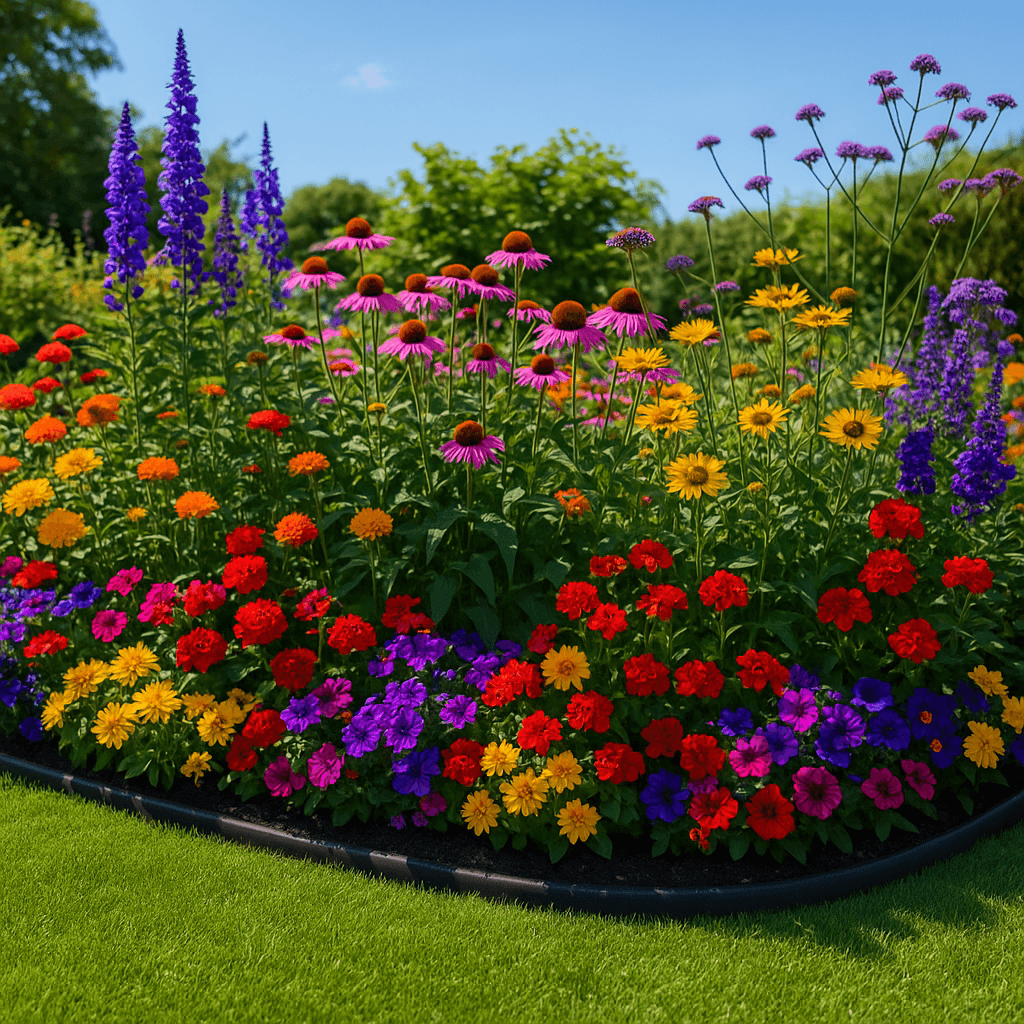Creating a well-structured and visually appealing garden often comes down to attention to detail. One feature that plays a significant role in both appearance and practicality is the edging of your flowerbeds. While it may appear to be a small element, flowerbed edging defines boundaries, supports maintenance, and enhances the overall character of an outdoor space. When choosing flowerbed edging for your garden, there are a range of qualities to consider that can make a big difference to the overall practicality and aesthetic of your outdoor space.
What should you consider when choosing flowerbed edging for your garden?
There are a number of different factors you should consider when it comes to the edging for your flowerbed. These include:
- Aesthetic compatibility: One of the first things to bear in mind is how the edging will look within your garden’s overall design. Edging frames your planting areas so it should feel integrated rather than imposed. As a result, it’s important to consider the architectural style of your home, the layout of your garden, and the type of planting you favour, so that you can make the right choice for your space. A contemporary garden for example, may benefit from clean lines and subtle borders, while a more traditional space might be better suited to softer, curved outlines. Colour, texture, and profile all play a part in ensuring that the edging supports, rather than distracts from, the planting it surrounds.
- Functionality and purpose: Edging also serves a number of practical functions. One of the primary roles is to create a clear divide between beds and lawns or paths, preventing grass or gravel from spilling into planted areas. It can also reduce soil erosion, help to retain mulch, and define shapes within a larger garden design. As such, before deciding on your flowerbed edging, it is useful to ask what problem it is intended to solve. For instance, if your garden has a sloping site, the edging may need to offer structural support as well as visual order. Alternatively, if the purpose is primarily decorative, subtlety may be the priority.
- Durability and longevity: The durability of flowerbed edging is a key consideration, particularly if you want a solution that requires minimal replacement or repair. Edging needs to withstand a range of conditions, from heavy rainfall to frost, strong sunlight, and physical wear from lawnmowers or foot traffic. This means that assessing longevity involves thinking about how different types of edging will perform over time, and also about how your garden might change in the coming years. If you anticipate redesigning the layout, a more flexible option may suit. If, however, you prefer a permanent structure, longevity should be a higher priority.
- Ease of installation: Some forms of edging can be installed with relative ease, while others require more time, skill, or equipment. When considering edging, reflect on whether you plan to install it yourself or hire a professional. Simpler options can often be put in place quickly, providing an immediate improvement to your garden’s structure. On the other hand, more complex edging may demand groundwork, precise measurements, or cutting to size, all of which add to the overall effort. Factoring in installation requirements at the outset can help you avoid unexpected complications later.
- Maintenance requirements: Like all aspects of a garden, flowerbed edging benefits from ongoing care. However, the level of maintenance required can vary considerably. Some forms of edging remain neat with very little intervention, while others may shift, fade, or require cleaning. If you prefer a low-maintenance garden, choosing edging that retains its appearance without regular attention will be important.
- Safety and practicality: Safety is another factor that is sometimes overlooked but can be especially important in family gardens or spaces that are regularly used by children and pets. Sharp edges, unstable fittings, or surfaces that become slippery when wet may present hazards. Equally, consider practicality in day-to-day use: edging that is too tall or awkwardly placed can make mowing or strimming difficult, while very low edging might fail to contain soil effectively. Striking the right balance between form and function will help ensure that the edging serves its purpose without causing inconvenience.
Choosing flowerbed edging for your garden
When choosing flowerbed edging for your garden, it is important to consider how form and function combine to suit your particular space. For high quality rubber garden edging, FlexiBorder is the perfect solution. This is easy to install, well designed for longevity and resilience, and offers increased design flexibility. Why not take a look at our different options for your garden today?


